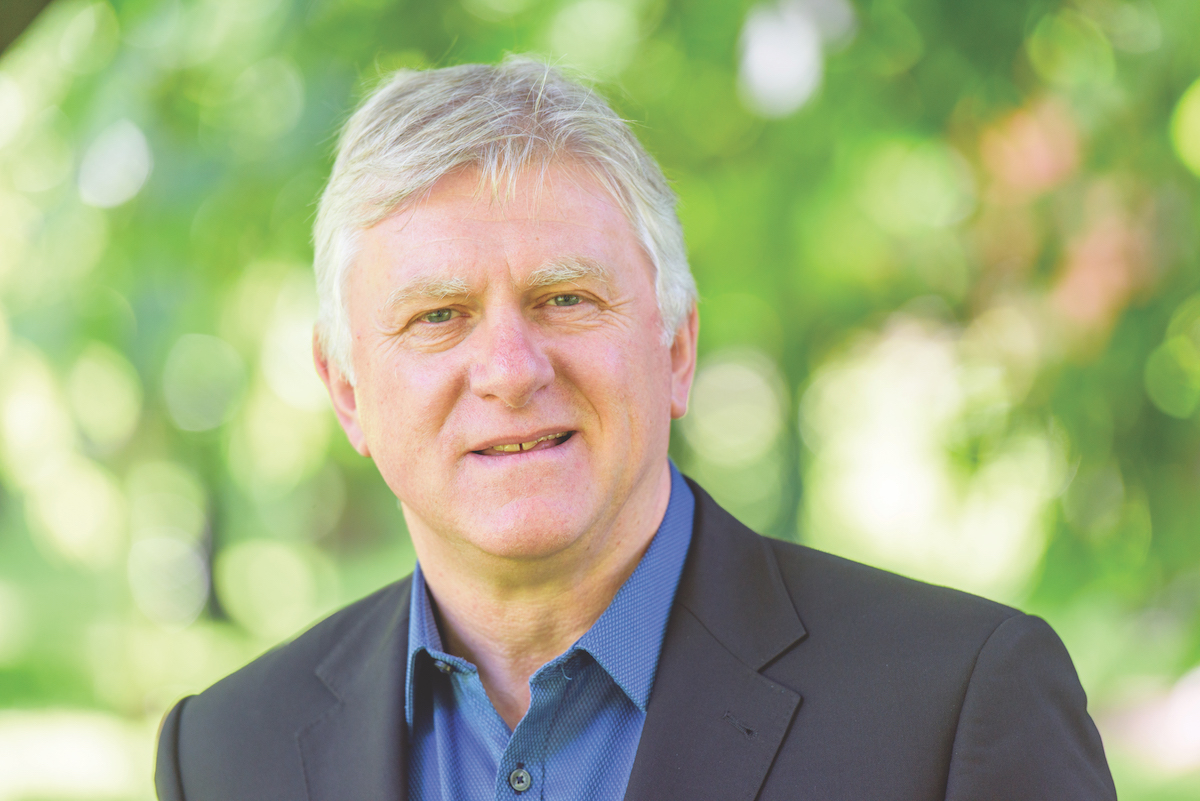The Welsh language, Cymraeg, has a turbulent history. In the 1930s, it was whispered furtively in streets and in schoolyards. At that time, social snobbery meant that Anglicised landowners looked down on the likes of proud Welsh miners who spoke their native tongue.
How things have changed. Now millions of pounds are invested into teaching Welsh and preserving the country’s cultural identity, and at Welsh-language TV station S4C, CEO Ian Jones has been leading the charge.
The right decision
Ian is one of the television industry’s most experienced chiefs. He’s worked around the world, advised government, and held senior positions with everyone from Granada International to National Geographic TV to A&E Television Network in New York. You’d think he could take his pick of TV jobs, so what made him return to his birthplace, Swansea, in Wales to run the country’s Welsh language TV station — the same station where he also started his career?
“It was a simple decision, really,” he replies. “When I talked to S4C about the role, I asked myself 2 questions: Did I want to do the role at all at some point in the future? The answer to that was yes, because returning to the place you started your career and becoming CEO was attractive. The other question was timing. Was 2012 the right time to return to S4C? There were so many issues surrounding the station back then — financial and organisational. It was a huge challenge, but I like huge challenges and that’s why I decided to return.
There were many things that needed changing to get S4C back on an even keel, and I would rather have done that in 2012 than at some point in the future when it would just be the same-old same-old: a CEO coming in to carry on doing things as they were.”

“You’ve got to hire people who are better than you in their fields of excellence … and allow them to retain control because by doing that you can empower them and get the best out of them.”
Combating the multi-media phenomenon
Ian was actually on the team that launched S4C in 1982, but broadcasting for any station today is a completely different business to the 80s when families watched what they were given, when they were given it. When Ian started, the station produced and commissioned programs for just one television channel. “We now have to provide content across a wide spectrum of platforms, not only our main, core TV channel but also on YouTube, iPlayer, Twitter and Instagram,” says Ian. “In 1982, families sat in front of their one TV set to watch a scheduled program. That’s virtually unimaginable now. People want to watch things when they want to watch them, on the platform and at the time of their choice.”
So that was one challenge, but, as Ian says, he likes challenges. Another was the fact that the 600,000 or so Welsh speakers are not all in Wales. Younger speakers, especially, are migrating for work, and to fulfil its raison d’être, S4C has to be available to them as well.
The third challenge has been keeping the S4C brand in people’s consciousness. “If they’re watching more Netflix and less scheduled programming, how do you keep your brand up there? How do you keep it ubiquitous in an environment where technology is changing and people are more mobile than ever before? We’ve got to reach people where they want to be reached and provide content that they want to use, in the forms they want to use it, whether that be a 3-minute clip, a 30-minute series episode, or full-length feature films.”
This has meant that S4C’s geographic boundaries have had to be smudged.
“If someone wants to watch S4C in Scotland, they need to be able to watch it — and they can. Similarly, once a year, there is a Royal Welsh Show, which is now the biggest agricultural show in the UK. We have made that available online, and we get people contacting us from countries as far away as Japan, Australia and New Zealand. They can view it because we raise money from sponsorship and commercial sources to finance English language soundtracks and subtitles.
“If we want to achieve growth for the future and hit our objectives, then
S4C can’t just be for the Welsh speakers; it has to be inclusive,” Ian continues “It has to be for people who are learning Welsh, who aspire to learn, and for English speakers who want to look at certain things on S4C.” Having said that, Ian’s still had to be mindful of S4C’s remit: helping preserve and encourage the use of Welsh, one of the oldest languages in the world. Another constant challenge, therefore, is to provide Welsh content that invites engagement and celebration, and to do all that within a commercial environment of endless choice.

Strategic programming is stabilising the industry
Reading through Ian’s impressive CV, it is not surprising to discover his global experience accompanied him to S4C. “There are a number of key elements I believe are really important for achieving excellence,” he says. “Some are very obvious. You’ve got to
be completely customer-centric and you’ve got to constantly innovate and keep up with innovation.”
He’s also focused on building closer relationships with suppliers and content producers, encouraging their input in both programming and strategic direction. “4 or 5 years ago, we had quite a period of flux due to reduced financing in the production economy, so we decided to look at the supply chain slightly differently and think: ‘OK, this is the talent we have to deliver for us. How can we create an environment that allows them to develop content, ideas and skills and allows us to be the beneficiary of that long term?’
We worked on what I call ‘stability agreements’, so, for example, if we’ve commissioned a drama series and it’s working well and we know we’ll want it in 3 year’s time, we commit to buy it now. That allows the company to plan their business better, knowing they have this programming coming up. We did that across the board and it really stabilised the industry in Wales and reduced our cost per hour of programming by 35% as well as increasing our efficiency.”
These program makers provide a range of content, from soaps to drama, documentaries to children’s series. News and current affairs, as well as some sport, come mainly under a strategy agreement with the BBC, with 90% of S4C’s financing now also coming from the BBC TV licence fee. Additional financing comes from commercial revenues and government grants.

Ian’s Legacy
There’s no doubt that S4C has thrived under Ian’s watch, and that staff will be sorry to see him leave at the end of 2017 to take on yet more projects in the UK and America. One thing he’ll likely be remembered for is his ‘go for it’ attitude to managing talent. “It’s important to empower staff, but 1 of the most difficult tasks for any CEO is to surround themselves with people that have more expertise in their fields than the CEO. Also to have the confidence to delegate and empower, while retaining control.
“The other thing I feel is extremely important is to always have an abundance mentality, to think ‘win–win’ and have hundreds of ideas, not one, and to enthuse and inspire people in that way. And finally — and I have had this mantra since I started working and believe passionately in it — ‘There’s no limit to what can be achieved if nobody takes the credit’.”
At this point, some chiefs may be squirming in their seats a little. How do you hang onto your job and claim your annual bonus if you’re not getting the credit for your company’s success? Ian is adamant: “If you can empower people and have the confidence as a CEO to let them run with it, if you can give other people the credit, you can achieve anything you want to because we’re all going towards a common goal that we’ll all take credit for.”

